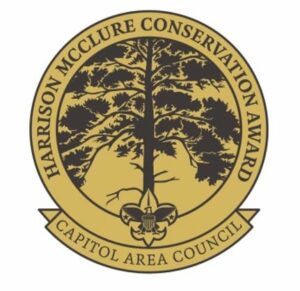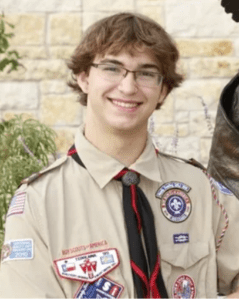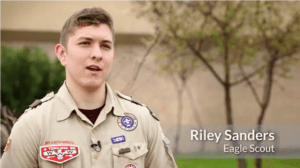- Join
- Activities
- Activities Calendar
- Cub Scout Activities
- Scouts BSA Activities
- Venturing Activities
- Summer Camp
- Winter Camp
- Camping
- Camporees
- Short-Term Camp
- Aquatics
- Climbing and C.O.P.E.
- Conservation Awards
- Conservation Days
- Eagle Reception
- High Adventure
- International
- National Jamboree
- Order of the Arrow
- Refund Policy
- Report to State
- Scout Offers
- Service Opportunities
- Service Requests
- Shooting Sports
- STEM Activities
- District Events
- Work at Lost Pines
- other councils
- Training
- Giving
- Resources
- Youth Safety
- FAQs
- Advancement
- Awards & Recognition
- Districts
- Commissioners
- Committees
- Forms
- Den Meetings
- diversity equity inclusion
- Eagle Resources
- Eagle Reception
- Financial Help
- Flag retirement
- For educators
- FOS campaign tools
- Insurance
- Certificate of Insurance
- Membership
- Popcorn
- Promoting Scouting
- Rechartering
- Tools for Council Registered Units
- religious emblems
- Religious Events
- Scholarships
- Scoutbook
- Scout of the Week
- short term camp
- special needs
- Unit Finance
- volunteer help
- Adventure Bus
- Web Update
- A+FCU
- covid policy
- About CAC
- Join
- Volunteer
- Donate
- Shop
- 512.926.6363
- Español
Harrison McClure Conservation Award

The goal is to create a dramatic and permanent impact on our natural resources through the collective results of thousands of Scouts performing lasting conservation projects and educating our future community leaders to be a cornerstone of the global conservation movement in the world in which they will lead.
Award Requirements
- Award can be earned by Scouts BSA, Venturing Scouts and Sea Scouts
- Scouts BSA need to complete 7 merit badges and lead one significant conservation project. See full requirements below.
- For more help – see examples of previous conservation projects below
Download the needed documents
- Harrison McClure Conservation Award Application
- BSA Distinguished Conservation Service Award Project Workbook
- List of Harrison McClure Conservation Award requirements (see below).
Requirements for the Harrison McClure Conservation Award
Scouts BSA Requirements
- Be a First Class Scout.
- Earn the following five Merit Badges: Environmental Science, Fish and Wildlife Management, Forestry, Soil and Water Conservation, and Sustainability.
- Earn any two of the following Merit Badges: Bird Study, Energy, Fishing, Fly‐Fishing, Gardening, Geology, Insect Study, Landscape Architecture, Mammal Study, Nature, Nuclear Science, Oceanography, Plant Science, Pulp and Paper, Reptile and Amphibian Study, or Weather.
- Plan, lead and carry out a significant conservation project from one of these categories:
- Air and Water Pollution Control
- Energy Conservation
- Fish & Wildlife Management
- Forestry & Range Management
- Hazardous Materials Disposal and Management
- Invasive Species Control
- Pollinator Management
- Resource Recovery
- Soil & Water Conservation
- Successfully pass the Harrison McClure Board Review conducted by the Council’s Conservation Committee.
Note: The project must be developed under the guidance and pre-approval of the Scout’s Unit Leader, a BSA Distinguished Conservation Service Award Adviser and the Council Conservation Committee. The project may be the Scout’s Eagle Scout project, if approved by the Eagle Advisor. All projects must contribute to environment improvement on a long-term scale.
Applicants must use the BSA Distinguished Conservation Service Award Workbook to document the service project. The documentation should include 1) Media coverage, 2) 3-6 months of Monitoring after project completion, 3) Public Education, 4) Commitment from an organization to maintain the project into the future, 5) Research on best conservation practices and consultation with a conservation professional.
Requirements for the Harrison McClure Conservation Award
Venturing and Sea Scout BSA Requirements
- Plan, lead and carry out a significant conservation project from one of the following categories:
- Air and Water Pollution Control
- Energy Conservation
- Fish & Wildlife Management
- Forestry & Range Management
- Hazardous Materials Disposal and Management
- Invasive Species Control
- Pollinator Management
- Resource Recovery
- Soil & Water Conservation.
- Do both 2 (1) and (2)
- a. Make a tabletop display or presentation on your conservation project for a crew, ship, post, a Cub Scout or Scouts BSA group, or another group.
- Submit an article about your project to a local newspaper, radio station, your school newspaper, internet publication, or TV station.
- Lead a Cub Scout or Scouts BSA group in carrying out an age appropriate conservation project from a BSA Distinguished Conservation Service Award project category (see list in requirement 1 above).
- Write a paper or make a presentation on a plant or wildlife species. Include its value as seen from various perspectives, some of the problems various species face, and how we might be able to help.
- Do both 5(1) and (1).
- Select an area approved by your BSA Distinguished Conservation Service Award Adviser that contains several species of wildlife or plants. Observe this area thoroughly in various conditions and seasons of the year. Study the history of this area, paying attention to how it has changed over time, ownership, land use patterns, and landform and climate changes.
- Make a presentation on interaction between species; the reaction of various species to changes in conditions or outside influences; the degree to which this area provides food, shelter, materials, and protection for each species; population trends; your predictions on the future of these species; suggested actions to protect or enhance the populations; and the investigation methods that you used.
- Do both 6(1) and (2)
- Study a specific plant or wildlife species approved by your Adviser that can be found in several different areas. Observe this species thoroughly in various areas and seasons of the year. Study the history of this species paying attention to how it has adapted over time.
- Make a presentation on this species; any reactions to changes in conditions or outside influences; this species’ needs for food, soil, shelter, materials, protection, assistance with propagation, etc.; population trends; your prediction for the future of this species; suggested actions to protect or enhance the population; and the investigation methods you used.
- Explain the basic natural systems, cycles, and changes over time and how they are evidenced in a watershed near to where you live. Include the four basic elements, land use patterns, and at least six different species in your analysis and how they have changed over time. Discuss both biological and physical components.
- Describe at least four environmental study areas near where you live. Include the reasons for selecting these areas, their boundaries, user groups, past inventories, any outside forces that interact with them, and a list of what things could be studied at each of them.
- Plan a field trip to each of the above areas, including detailed plans for consolidating various investigations. Follow all the requirements such as landowner permissions and/or needed permits, safety plans, transportation plans, equipment needs, etc.
- Do both 10(1) and (2).
- Under the guidance of a natural resource professional, carry out an investigation of an ecological subject approved by your BSA Distinguished Conservation Service Award Adviser in one of the areas selected above. Inventory and map the area. Conduct a detailed investigation providing specific data for a specific topic.
- Document and present your findings to a crew, ship, post, pack, troop, or another group.
- Teach others in a crew, ship, post, pack, troop, or another group how to carry out an ecological investigation. Use steps 9 and 10 above with the group so that they may also learn by doing.
- Successfully pass the Harrison McClure Board Review conducted by the Council’s Conservation Committee.
Note: The project must be developed under the guidance and pre-approval of the Scout’s Unit Leader, a BSA Distinguished Conservation Service Award Adviser and the Council Conservation Committee. All projects must contribute to environment improvement on a long-term scale.
Applicants must use the BSA Distinguished Conservation Service Award Workbook to document the service project. The documentation should include 1) Media coverage, 2) 3-6 months of Monitoring after project completion, 3) Public Education, 4) Commitment from an organization to maintain the project into the future, 5) Research on best conservation practices and consultation with a conservation professional.
See Examples of Past Conservation Projects
Milkweed to Monarchs
Ben R. lives in a Monarch Butterfly corridor.
His project: Scatter 17,500 Milkweed Seed balls in Val Verde and Kinney County since 2015.
85% sprout rate.
Creating Coral Reefs
Ryan S. built artificial reefs which were placed in the Gulf of Mexico to help regrow the diminishing coral reef population.
Fishing Line Recycling
Astrid TJ. installed monofilament recycling receptacles at county parks to reduce the danger to fish and wildlife.
Rain Garden
Riley S. built a rain garden and developed public educa
tion materials in English and Spanish to explain the benefi
ts of reducing parking lot runoff.
Save Native Species
Archer H. wanted to preserve a native drought-tolerant species of tree called the Texas ash.
Tens of millions of native ash trees have been lost across the country due to the
accidental introduction of a pest called the emerald ash borer
Plastic Bag Recycling Program
Ben R. led efforts to create a county-wide plastic bag recycling program.
About Harrison McClure
Harrison McClure (1994-2016)








